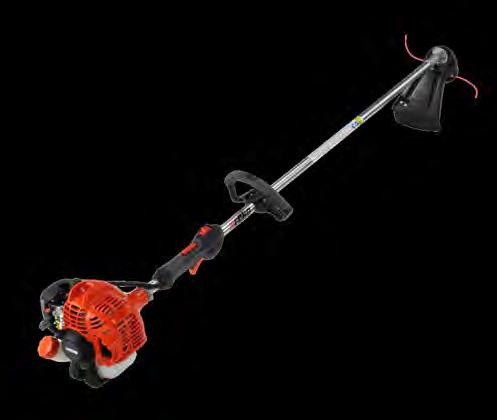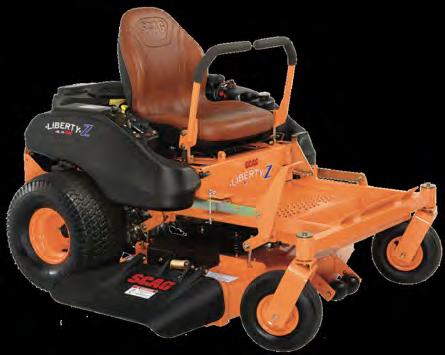
SLEEP
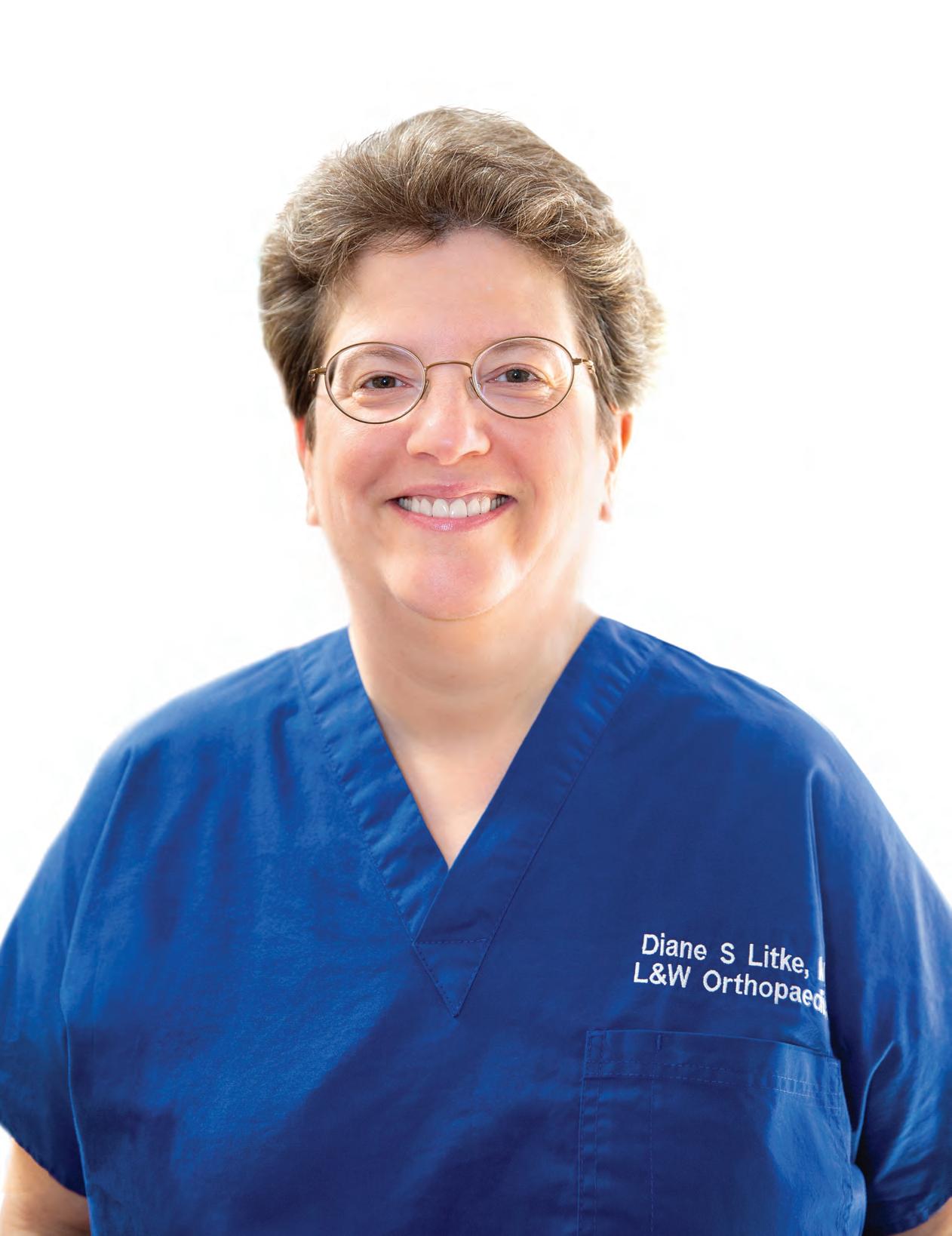



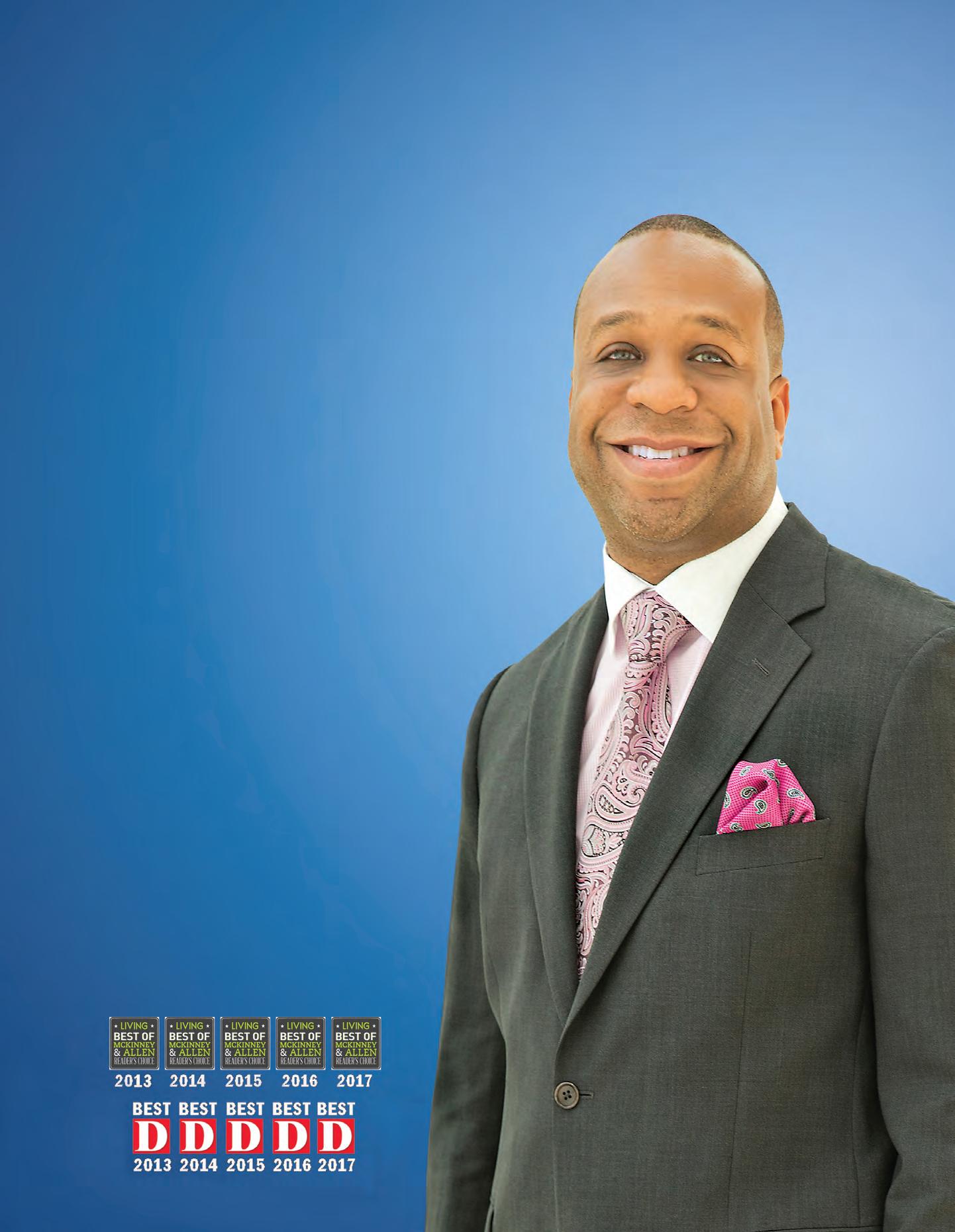


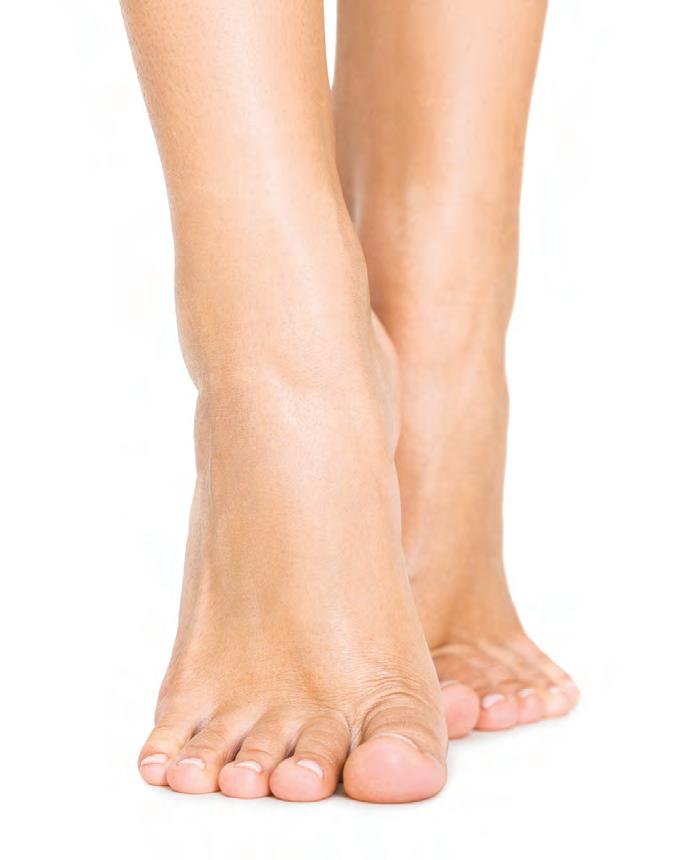
Southwest Foot & Ankle Center is a respected group of board certified foot and ankle surgeons. They are fellow trained surgeons, and board certified in wound care and reconstructive surgery. All physicians have also completed an intense residency and fellowship in the area of limb salvage, and foot and ankle surgery. The team at Southwest Foot & Ankle Center strive to make each patient’s experience personable. Our outcomes are of perfection and meticulous in surgery. As a result, patients from all over the country seek to be treated by DFW Wound Care Center.
Foot and Ankle Surgery
Bunion and Hammer Toe Correction
MIS—Minimally Invasive Surgery
Heel Pain (Plantar Fasciitis) Stem Cell Therapy
Neuropathy
Ingrown Toenails
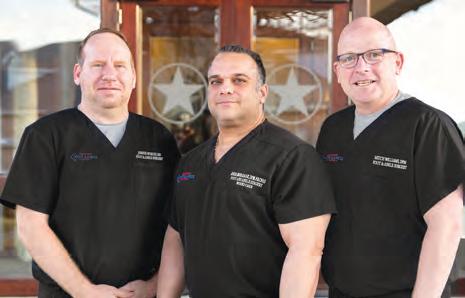
Feet
Wound Care Custom Orthotics & Braces Laser Therapy for Pain, Swelling, Arthritis, and Wounds


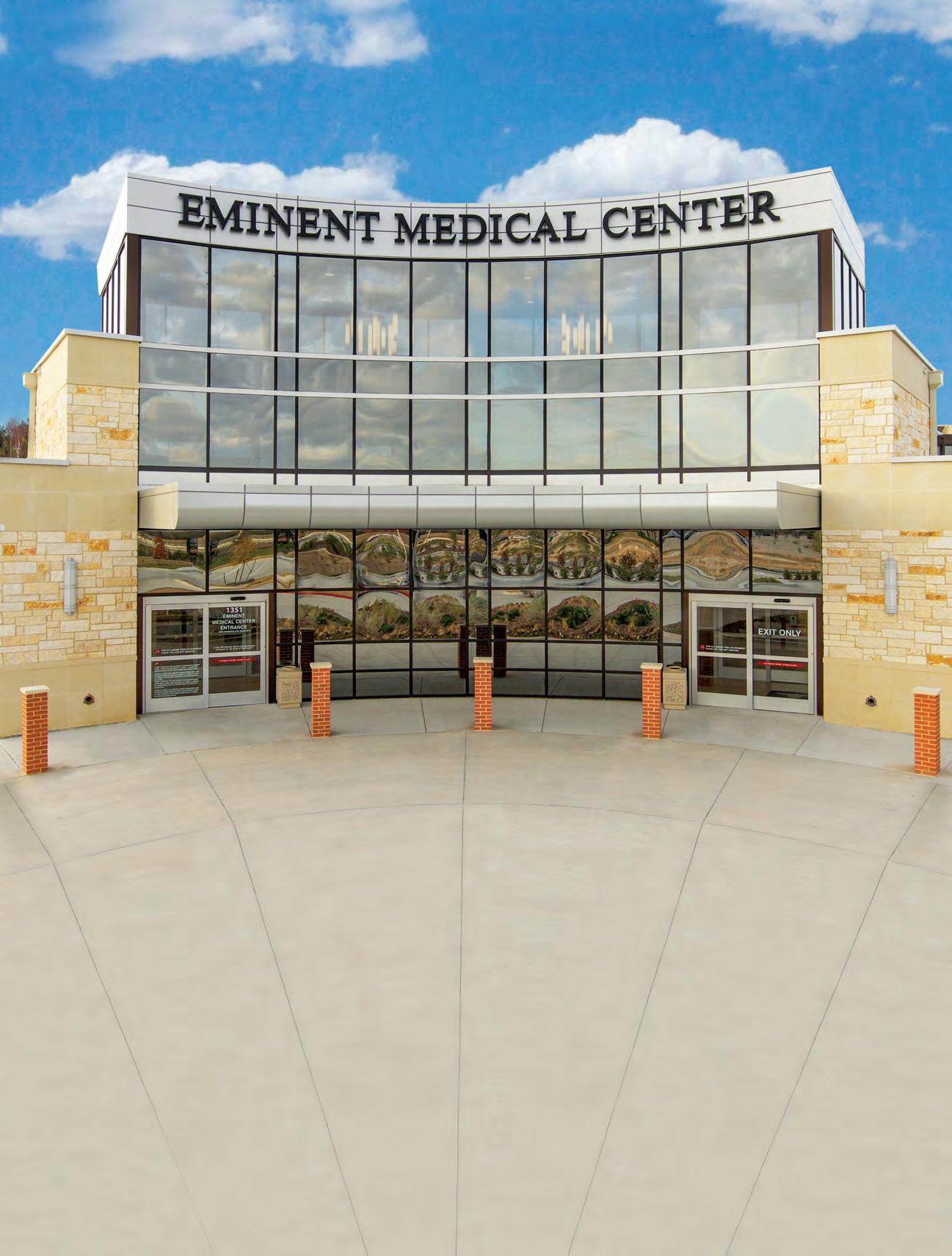

Pain Management • Sports Medicine • General Surgery
Spine Surgery • Orthopedic Surgery • Neurosurgery
Minimally Invasive Spine Surgery • Total Joint Surgery
Foot & Ankle Surgery • Hand Surgery
Gynecological Surgery • Plastic Surgery
Orthopedic surgeons and the medical staff at Eminent Medical Center are excited to offer Zimmer Biomet’s ROSA Knee System, which helps surgeons personalize surgical procedures for their patients.
With an artist’s eye and a deep knowledge of the inner workings of the body’s most active and important joints, Dr. Diane S. Litke’s skilled hands and nimble mind are highly sought after. The Richardson orthopaedic surgeon graces this issue and for good reason.
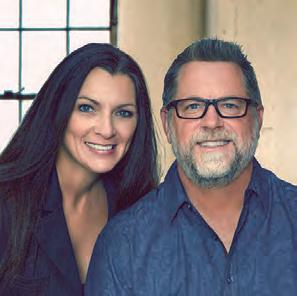
For over 20 years, Dr. Litke has treated patients in the community and eliminated their pain. Hip, knee, and shoulder issues are her specialities. The results she achieves are astounding. For example, a patient who recently had both her knees replaced was pain free and soon walking miles a day. So much so that the patient lost 50 pounds in the months following her successful surgery. Read more about Dr. Litke and how she helps her patients achieve their goals on page 8.
Next, may we suggest turning your attention to the celebrity feature story. We catch up with morning talk show host Kelly Ripa. The petite dynamo is an energizing blend of morning glory that millions of people rise and shine to.
Ripa has been entertaining audiences for two decades on various iterations of the Live! morning program. From Live with Regis & Kelly, to Live with Kelly & Michael, and now Live with Kelly & Ryan, Ripa’s on-air persona is as fun and fresh as the first day she sidled up to the show’s original host, Regis Philbin.
Find out what makes Ripa sparkle and how she keeps it fresh with her long-time hubby Mark Consuelos on page 24. We’re not surprised how candid Ripa gets when sharing details of her life. After all, being relatable and sharing personal anecdotes are part of her charm.
Switching gears to something more serious, we discuss sleep apnea on page 16. Roughly 20 million people suffer from this ailment and have difficulty breathing while sleeping. Left untreated, it can lead to serious health conditions. Read about the causes, effects, and treatments to get the inside track on how to tackle this problem.
For something on the lighter side, turn to page 38 for suggestions on fun hiking adventures to tackle with your kids or grandkids. Far from strenuous, these novel suggestions offer learning opportunities for kids and adults alike.
Here’s hoping you get to it.
Be well!

MAY/JUNE 2021
PRESIDENT & CEO
SAM HOUSTON
VICE PRESIDENT & CFO
SPRING HOUSTON
EDITOR, FEATURE WRITER & SOCIAL MEDIA
SONDRA BARR
ART DIRECTOR
VANESSA FRYER
ACCOUNTS MANAGER
JENNIFER BEAVERS
WEBSITE
LYDIA ROGERS
ADVERTISING & SALES
TEXAS: Denton County, Dallas County, Collin County
TEXAS & OKLAHOMA: Texoma Area
WRITE TO US:
Tell us who you would like to see featured on the cover, or what subjects you would like covered in upcoming editions of LIVING WELL MAGAZINE at info@livingwellmag.com
SUBSCRIPTIONS & CUSTOMER INQUIRIES
Houstons of Dallas Publishing, Inc. 102 E. Broadway, #901 Prosper, TX 75078
www.LivingWellmag.com
Phone: (214) 507-1000 Fax: (855) 248-2132
LIVING WELL MAGAZINE is a source for quality educational articles on living a healthy, vibrant life. Our focus is on connecting our readers with the latest information on a host of topics relevant to their evolving life. From cutting edge medical news and procedures to top-tier financial, legal and lifestyle information. Connecting readers to leading medical and business professionals in their community in Texas and Oklahoma.
advertisements in this Magazine are placed by third parties. We do not control or endorse either the advertisements or their content. Further, we do not manufacture, sell, distribute or provide any of the goods or services advertised herein. We hereby expressly disclaim any liability with respect to information or goods and services contained herein. We further disclaim any and all warranties or representations, express or implied, with respect to such information, goods or services, including any warranty of merchantability or fitness for a particular purpose (it being

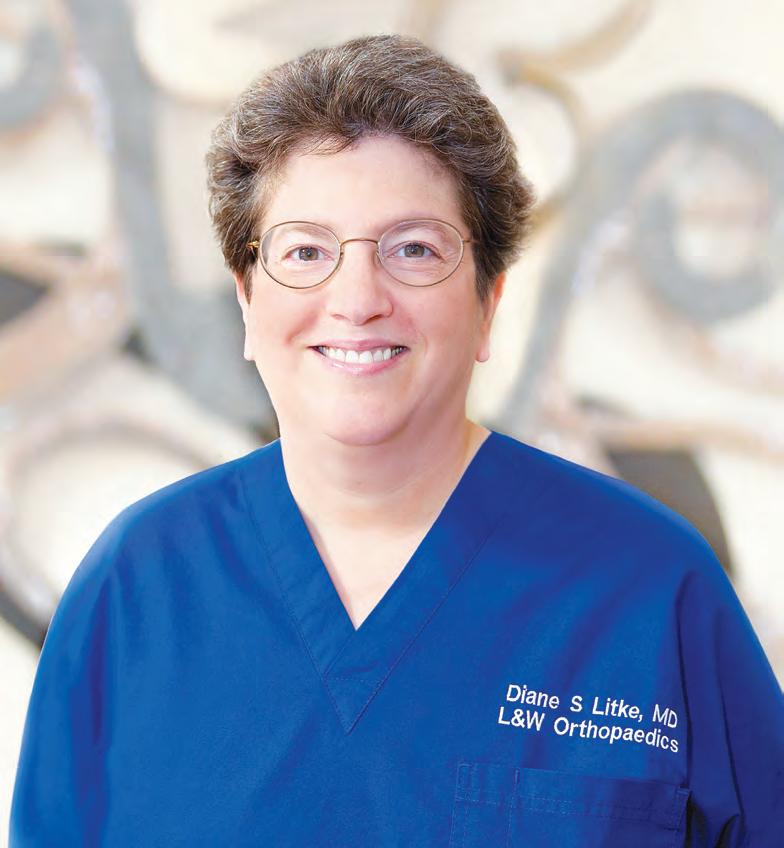



Elder Law is first and foremost about empowering seniors. Elder Law services help you address issues of living arrangements, financial well-being, healthcare options, and the ultimate disposition of assets, enabling you to make your own choices and decisions about managing life as you age.

AREAS OF LAW: LONG-TERM CARE PLANNING
MEDICAID ELIGIBILITY
VETERANS BENEFITS
ESTATE ADMINISTRATION GUARDIANSHIPS
PROBATE LITIGATION
ESTATE PLANNING WILLS & TRUSTS
Losing a loved one is never easy. Many people describe the weeks and months following such loss as “a blur.” After notifying family members, and planning and carrying out the memorial service, comes the question of how to handle the loved one’s estate. Many times, the answer is probate. While the probate process has a reputation for being time-consuming and costly, in Texas, it is relatively quick and inexpensive.
Probate provides for an orderly transition of property ownership following a death. Probate is necessary when an individual who has died owned property that does not pass directly to another individual through beneficiary designations. Accounts with rights of survivorship or payable-on-death beneficiaries, including life insurance policies, are examples of property that passes directly to a designated individual without the need for probate. Importantly, and despite common belief, title to real property listed in more than one name does not automatically pass to the survivor. Therefore, probate is often necessary to transfer title to the surviving spouse.
Any “interested person” may initiate the probate process. This includes anyone having a property right in, or claim against, the estate being administered. Texas has two types of formal probate procedures.
Most probates are handled as independent administrations, meaning the executor or administrator does not have to post a bond or ask the court’s permission before settling the estate. By contrast, a dependent administration is a court-supervised administration. If there is no Will, or if the Will does not provide for an independent administration, then the administration will be “dependent,” unless the beneficiaries agree otherwise. Dependent administrations tend to be more expensive, since the administrator must seek court approval for every major decision. However, this added burden and expense may be preferable to protect the administrator if the estate has multiple creditors or feuding beneficiaries.
An “executor” is a personal representative who was named in a Will that has been admitted to probate, and who serves in the capacity stated in the Will. An “administrator” is anyone else who is appointed to handle the estate. The individual named in the Will has first priority to serve as executor. However, the judge may refuse to appoint an individual named in the Will if the judge finds that person to be unsuitable.
Once the judge is satisfied that the Will is valid and the person asking to be appointed executor is a suitable person to serve, the executor will be issued Letters Testamentary, which evidences the executor’s authority to gather assets and act on behalf of the estate. The executor must issue notice to creditors, notify beneficiaries, and gather the assets, which the executor must safeguard until the time comes to distribute to the beneficiaries. Collecting and protecting estate assets is the primary job of the executor, who should care for the property of the estate as a prudent man would care for his own property. Once the business of the estate has been concluded, assets have been collected, and debts have been paid, the executor may distribute the property to the beneficiaries.

In addition to independent and dependent administrations, Texas law allows for another simple probate procedure known as a muniment of title. A muniment of title may be used when an individual died with a valid Will, there are no unpaid debts, except those secured by real property, and the individual was not receiving Medicaid benefits prior to death. This proceeding allows for the probate of a Will without the requirement of appointing an executor or administrator, notifying creditors, or filing an inventory, thus making the process easier and less expensive. A muniment of title is not a feasible option if the individual owned property outside the state of Texas or held non-probate assets, such as insurance or retirement accounts, that were payable to the estate, rather than an individual.
There are many factors and variables to consider when determining whether and what type of probate proceeding is appropriate for an estate. A Will remains a valid legal document for four years after death. After that time, if administration of an estate is necessary, it will be handled as if there was no Will. Therefore, if a loved one has died, it is important to contact an attorney who handles probate to discuss which of the various options is best suited to meet your circumstances.
Richardson orthopaedic surgeon Dr. Diane S. Litke has an artist’s eye and a deep knowledge of the inner workings of the body’s most active and important joints. Yet, what truly sets this dedicated doctor, who co-founded L&W Orthopaedic Associates, apart is her unwavering passion for helping patients live better, pain-free lives.
Dr. Litke was fascinated by the human body and its movement early on. Growing up in New York, she once found herself in the office of a doctor who was an orthopaedist for the New York Mets. “He was showing me a photo of all his residents and pointed out, ‘There are no women in this group,’” recounts Dr. Litke, who firmly replied, “Not yet.”
This youthful confidence grew when Dr. Litke was attending the University of North Carolina Chapel Hill. While interning in the athletic training department, one of the head trainers said to her, “You’re smart enough; you should be the doctor not a trainer.”
The soon-to-be doctor’s thoughts exactly. She earned a medical degree there and went on to complete her orthopaedic residency at the University of South Carolina. She is certified by the American Board of Orthopaedic Surgery, and is a Fellow of the American Academy of Orthopaedic Surgery and a Fellow of the American Association of Hip and Knee Surgeons.
“I went to medical school and then decided 100% that orthopaedics was what I needed to do,” explains Dr. Litke, who’s always enjoyed fixing things. “Someone comes to you in pain and you make them better. They can then go back to their lives better than they were before.”
Hip, knee, and shoulder issues are Dr. Litke’s specialities. Assisting her skilled hands, she uses the latest state-of-the-art robotic equipment for accuracy and precision, delivering a powerful combination of experience and technology to all her patients.
Dr. Litke utilizes the Stryker Mako robot, a high-tech piece of medical equipment at Methodist Richardson Medical Center. Serving as the director of the joint program there, Dr. Litke is pleased with the hospital’s services and nurturing culture.
“Methodist Richardson has always had a good atmosphere to work in,” says Dr. Litke. “They’ve been very supportive of my practice, of me, of everything.” The hospital also makes it easier for Dr. Litke to provide exceptional surgical care.
“I had a patient that I discharged this morning who had a total knee done by somebody else about 10 or 12 years ago and he said the difference was night and day, in terms of the pain and function that he had in his knee just less than 24 hours after surgery,” says Dr. Litke.
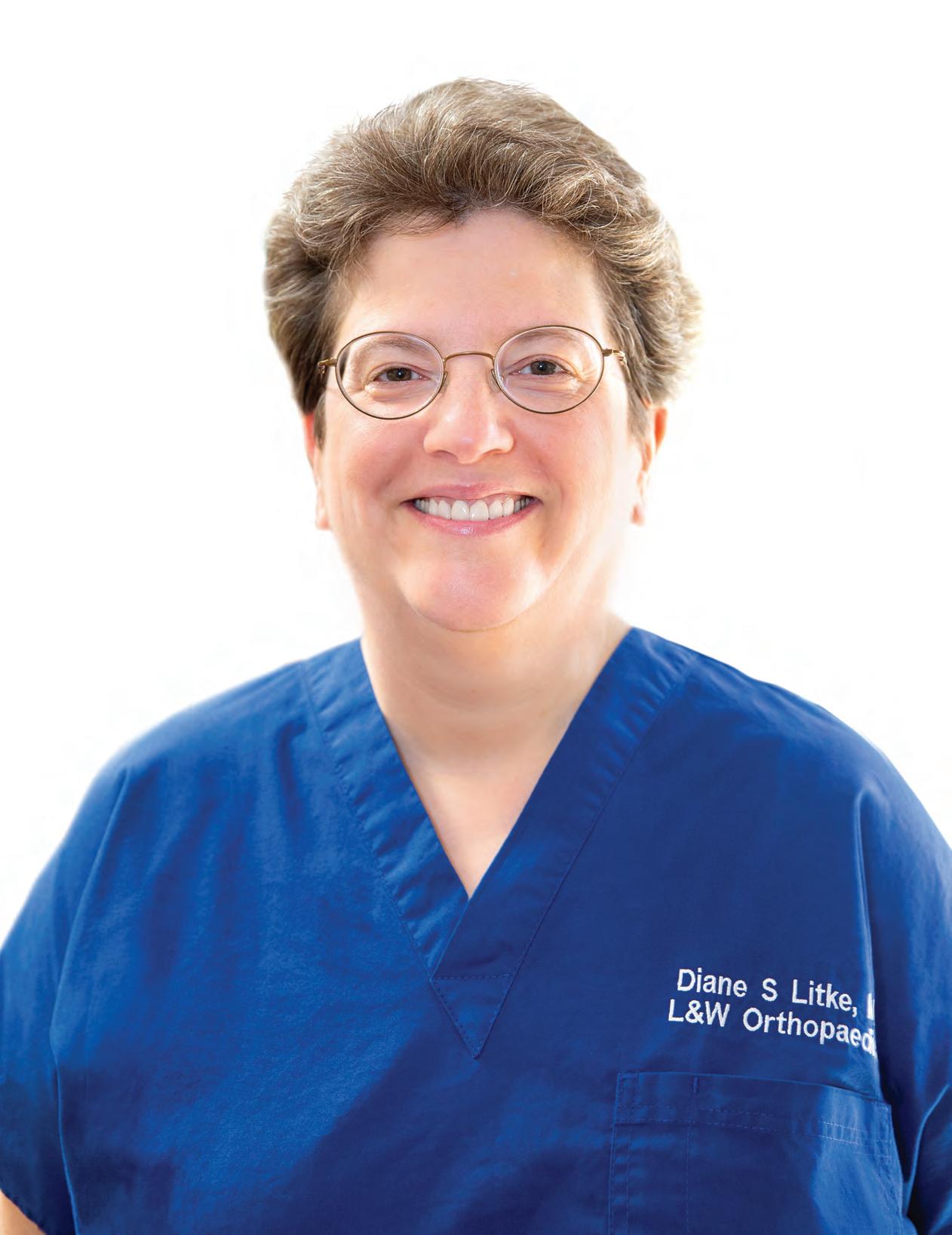
I HAD A PATIENT THAT I DISCHARGED THIS MORNING WHO HAD A TOTAL KNEE DONE BY SOMEBODY ELSE ABOUT 10 OR 12 YEARS AGO AND HE SAID THE DIFFERENCE WAS NIGHT AND DAY, IN TERMS OF THE PAIN AND FUNCTION THAT HE HAD IN HIS KNEE JUST LESS THAN 24 HOURS AFTER SURGERY.
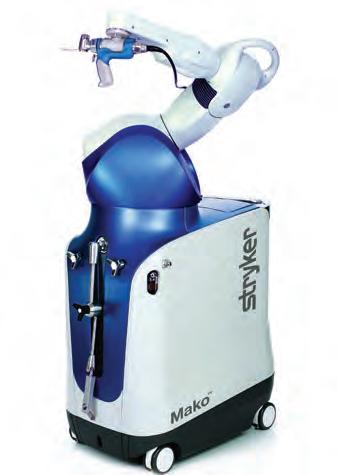
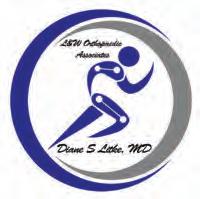
She attributes this to improved pain management techniques, robotic assistance, no tourniquets, and the most up-to-date pain protocols used to help the patient after surgery.
“I have this one patient who had both her knees done. Within a few months she was walking pain free and walking miles a day. I just saw her the other day and she had lost about 50 pounds just by being able to walk and play with her grandkids,” details Dr. Litke.
“Everyone is different. I’ve had people get back to near normal anywhere from two to six weeks, although sometimes it’s longer,” she says of knee replacements. “Hip replacements sometimes that’s even more dramatic. I’ve had people go back to work two to five days later.”
Being able to change someone’s life by alleviating their pain is Dr. Litke’s motivation. “One of the things I like to pride myself on is being able to use cutting-edge technology, while maintaining a personal touch with patients,” says Dr. Litke.
This personal touch extends to being available for her patients day, night, or weekend. Patients have access to Dr. Litke anytime they need by calling the office, which rings to her phone after hours. Take for instance a patient who’d broken his hip from a fall recently. “I wasn’t on call but he asked me if I would do it and I said, ‘Of course I will,’” she describes.
Opening up L&W Orthopaedic Associates in Richardson 20 years ago was a natural progression for this consummate medical professional. She opened the practice with Dr. John T. Wey, who’s a foot and ankle specialist. In the ensuing years, L&W has become the predominant orthopaedic group in the area and treats patients from not only Richardson, but Garland, Wylie, Plano, and the North Dallas area.
Ending up in Richardson was luck of the draw and not Dr. Litke’s initial intention. Since moving to Richardson, she’s fallen for the small town feel of the area and its proximity to a big city. Her involvement with the community extends to serving on local boards and volunteering at the Wildflower Festival, which unfortunately has been on pause for the past two years due to COVID.
Speaking of COVID, L&W Orthopaedic Associates has responded to the pandemic with vigor. Everyone is required to wear masks, everything is cleaned diligently multiple times throughout the day, and patients undergo temperature and question screening. As for surgeries, COVID patients aren’t allowed on that floor. Additionally, the amount of outpatient joints has increased. “Right now about 50% of my patients are going home the same day of the surgery, as opposed to being admitted to the hospital. They can enjoy their recovery in the comfort of their own homes,” details Dr. Litke.
In the rare instances when Dr. Litke finds herself out of the operating room and with free time, she gravitates toward the art of photography. Perhaps it’s not surprising that she’s drawn to taking photos of musicians’ hands playing different instruments. Dr. Litke is fascinated by the form of the hand, how it can do certain things, and move in specific positions, all things that bring to mind her work as a skilled surgeon. “Sometimes they look all beat up, the hands, yet they make beautiful music,” she says.
To schedule an appointment with Dr. Litke, please call (972) 498-4791.
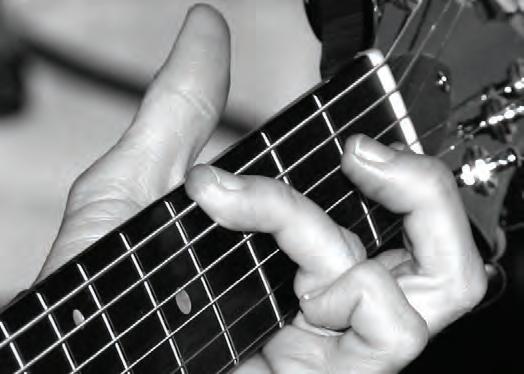
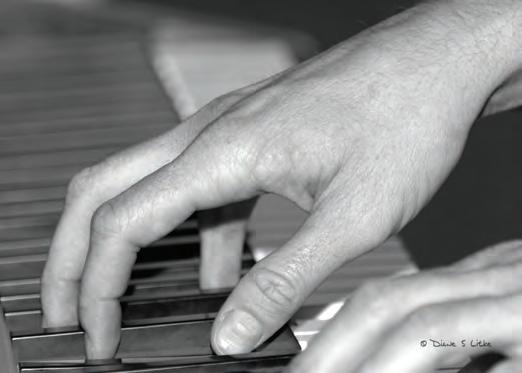
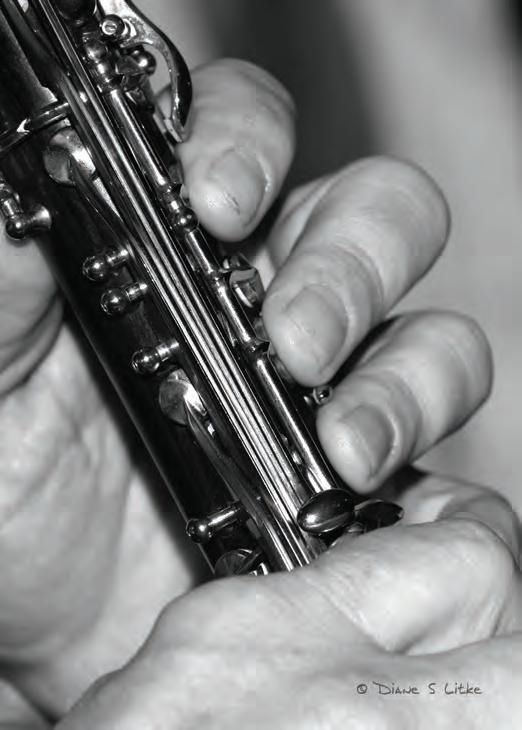

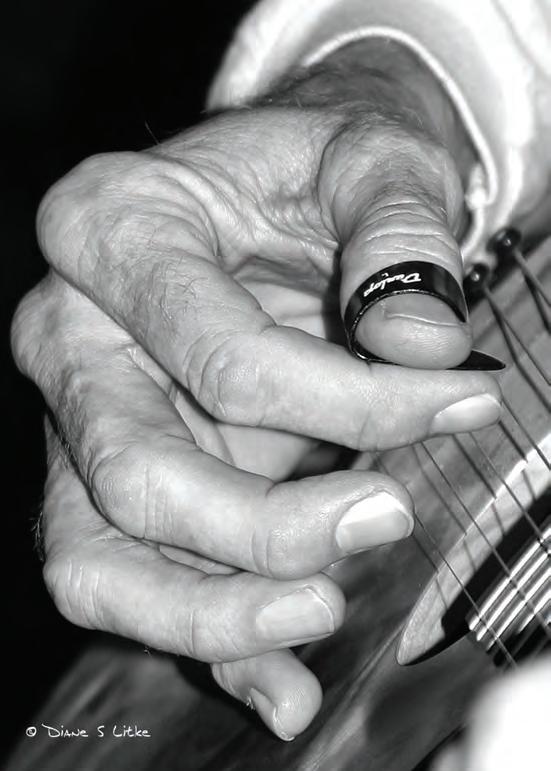
It’s essential to take care of your feet !
Premier Foot & Ankle specializes in the treatment of all foot and ankle issues patients of all ages may experience. Our dedicated providers are committed to providing patients with quality care and pain relief using cuttingedge technology such as Pulse Activation Treatment to cure heel pain/plantar fasciitis as well as Padnet vascular and Smart Scan nerve testing for diabetics. By
for the entire family, we at Premier Foot & Ankle focus on treating both the injured athlete and anyone with foot or ankle injuries.
Premier Foot & Ankle is the leading practice of foot and ankle specialists in the Dallas-Ft. Worth area as evidenced by multiple awards such as the Best of Dallas 2011-2012 and 2015-2020 and the Reader’s Choice Best of Living 2017. As a trusted and dedicated
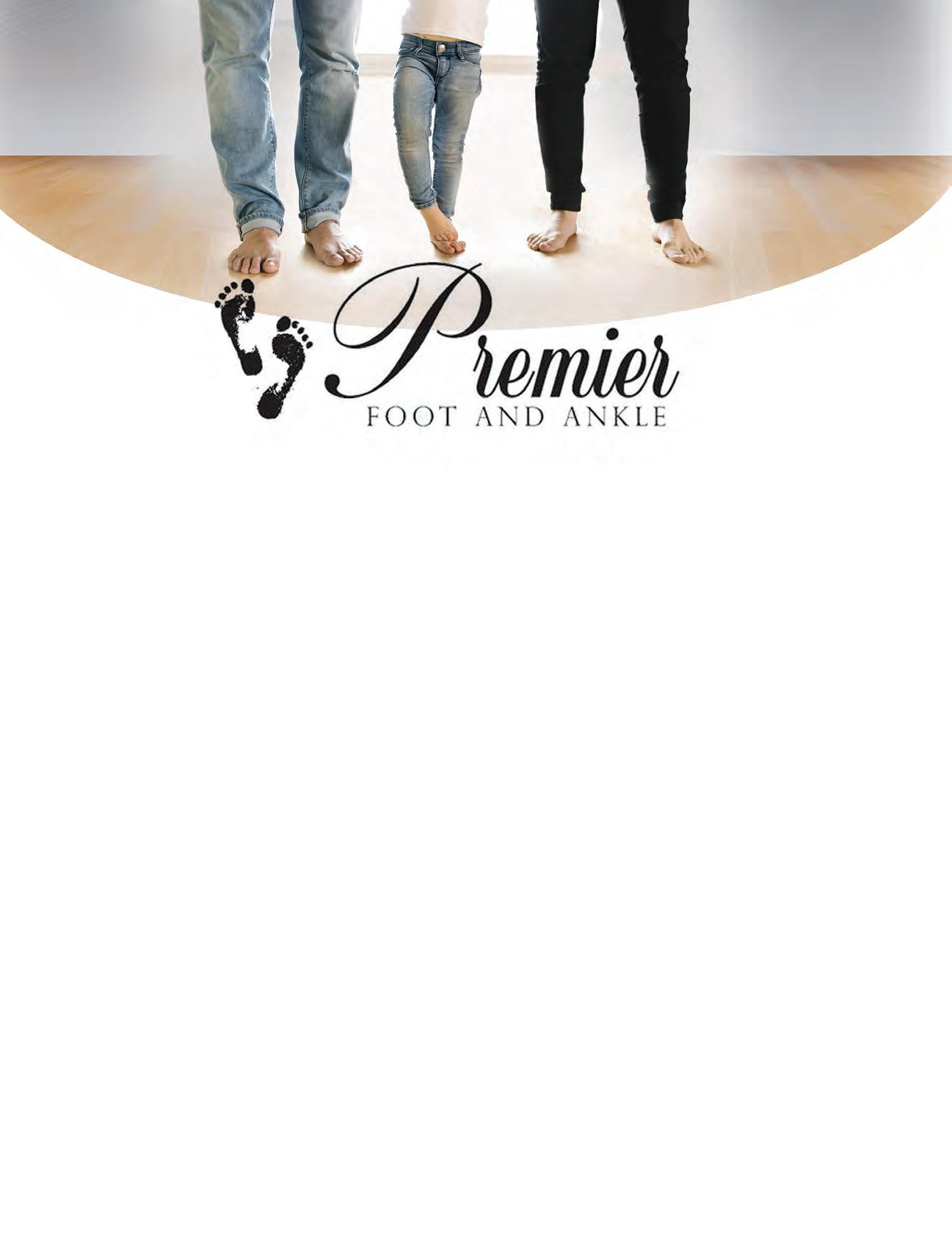
provider, Premier Foot & Ankle is here to help patients alleviate their foot and ankle pain resulting from various foot disorders and injuries such as sports
and diabetic foot care.
To move toward your pain-free lifestyle with an individualized comprehensive treatment plan, visit us today at www.premierfoot.com to schedule your appointment!


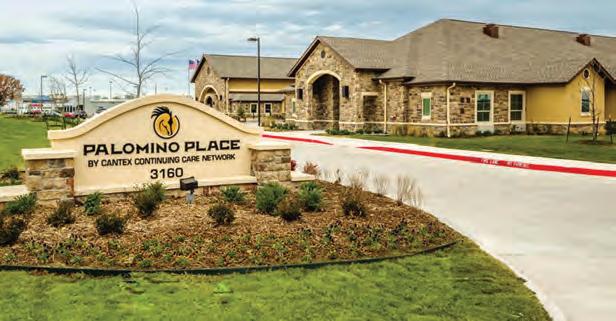






Spring in North Texas can be especially brutal for allergy sufferers. According to the Asthma and Allergy Foundation of America, Dallas ranks 19th in the nation for the most challenging places to live with spring allergies, although this year’s ranking is an improvement from last year’s no.7 rank.
Spring allergies can cause sneezing, runny nose and nasal congestion, as well as dry, red, itchy, burning or even swollen eyes. These symptoms are more than irritating; they can be downright painful.
When the conjunctiva (mucous membrane covering the whites of the eyes and lining the eyelids) comes into contact with allergens such as pollen from grasses, trees and weeds, the immune system senses a threat and antibodies are developed that release histamine, causing watery, itchy, red eyes.
In addition to seasonal allergies, many people suffer from perennial allergies, which may be caused by dust, mold, pet dander, air pollution, cosmetics, perfume, medication or smoke. If you aren’t certain of the cause of your eye allergies, ask your doctor for an allergy test to determine the source of your discomfort.
If you suffer from seasonal allergies, follow these eye care tips for relief from your symptoms:
• Apply a cold compress. If your eyes are puffy or swollen from allergies, a cold compress can provide temporary relief.
• Stay inside and keep your windows closed on high pollen count days. Local weather services provide daily pollen counts. When pollen is high, avoid being outside as much as possible. Typically, pollen counts tend to be higher midmorning and early evening.
• Wear eyeglasses or sunglasses to block pollen from your eyes. When you do go outside, eyeglasses or sunglasses can provide an extra shield to protect your eyes from allergens that may be in the air.
• Practice proper contact lens care. Contact lens wearers may experience more allergy symptoms due to allergens becoming trapped behind the contact lens. Lenses should be cleaned thoroughly and changed regularly. Do not share contact lenses or cases with others.
• Wash your hands and hair frequently. In the same way your hands can spread germs, they can also spread allergens, and if you spend much time outside during the spring, pollen and other allergens may become trapped in your hair.
• Avoid rubbing or scratching your eyes.
Consistently rubbing or scratching your eyes may lead to more serious eye problems or a damaged cornea. Purchase over-the-counter eye drops, or ask your doctor for prescription eye drops to help relieve dry or itchy eyes.
• Change your bedding frequently. Allergens can stick to your bedding, further irritating your eyes.
Remember that some eye conditions—dry eyes or pinkeye, to name a few—are not caused by allergies, but may be confused with allergies.
If you are experiencing any of the symptoms of eye allergies, only your doctor will be able to tell you if your symptoms are in fact caused by an allergic reaction. Schedule an eye exam today to ensure your symptoms are not caused by an infection or more serious problem.

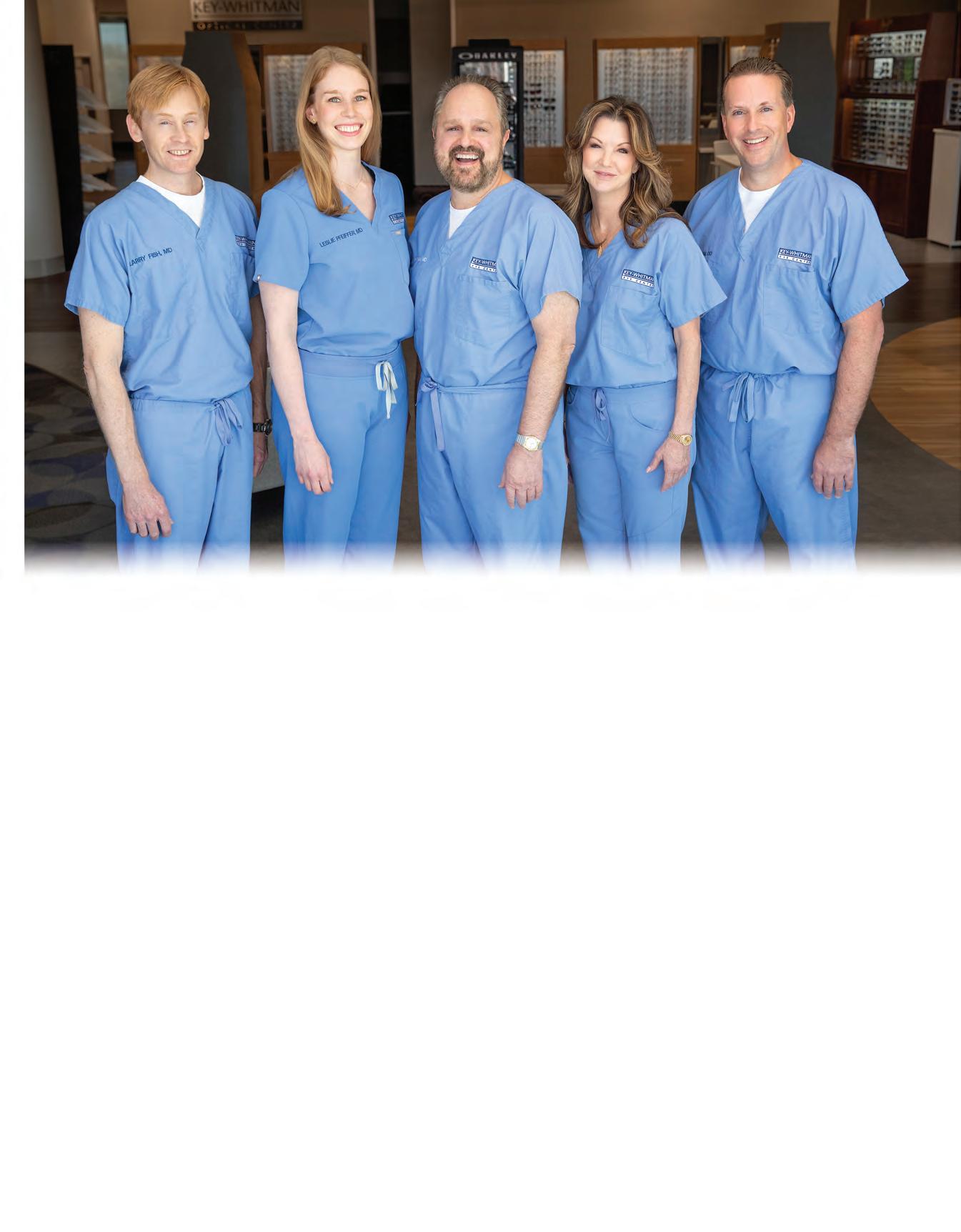
Common types of allergic eye conditions
Allergic conjunctivitis or allergic rhinoconjunctivitis:
This is the most common allergic eye condition, and it is typically associated with seasonal allergies or hay fever. The release of histamine can cause common eye allergy symptoms, including itchy, red, burning, watery or swollen eyes. Topical antihistamine drops, decongestants and mast-cell stabilizers are common treatments for allergic conjunctivitis.
Atopic keratoconjunctivitis:
Primarily affecting adolescent boys, this condition involves inflammation in the conjunctiva and the cornea. Symptoms include itchy, red patches on the eyelids, scaly or crusty skin on the eyelids, heavy discharge or sensitivity to light. If not properly managed, this condition could lead to permanent scarring of the cornea from rubbing and scratching.
Vernal keratoconjunctivitis:
Though less common, this spring eye allergy condition causes the eyes to become itchy, sensitive to light and can even cause eyelids to feel heavy or droopy. Improper treatment may lead to impaired vision. A short-term, low-dose prescription of topical steroids has shown to be the most effective treatment for this condition.

Seven locations to serve you Dallas, Plano, Mesquite, Frisco,


We hear a lot about obstructive sleep apnea (OSA) from both local and national news sources. Some 20 million people suffer with OSA and only 10% are diagnosed. More than 50% of those over 64 have a sleep problem. What is OSA, the causes, effects and how is it treated? I will try to answer these questions so if you or a loved one are aware of the symptoms you can take action.
There are two types of sleep apnea: central and obstructive. Central is less common, occurs when the brain fails to send the appropriate signal to the breathing muscles to initiate respirations. Obstructive is more common and occurs when air cannot flow into or out of the person’s nose or mouth although efforts to breathe continue. In a given night, the number of involuntary breathing pauses or “apnea events” may be as high as 20 to 30 or more an hour. These pauses are usually accompanied by snoring between apnea events, although not everyone who snores has this condition.
During these “events” the person in unable to breathe in oxygen and to exhale carbon dioxide, resulting in low levels of oxygen and increased levels of CO2. The brain senses this imbalance and triggers the upper airway muscles to open; usually a loud snort or gasp will occur. These arousals restart breathing but prevent the patient from getting deep restorative sleep (Stage 4 or REM).
Contributing risk factors for sleep disorders including being overweight, race, gender, smoking, alcohol consumption, high blood pressure, under-active thyroid or some physical abnormality in the nose, throat or upper airway. Sleep apnea seems to run in some families, possible genetic basis.
Loud disruptive snoring cessation of breathing during sleep, waking up gasping, morning headaches, grogginess, dry mouth, frequent nighttime urination, moodiness and irritability. This pretty much is how I feel after staying out late and my grandkids wake me up early.
Left untreated OSA can lead to serious health conditions,
including physical, emotional consequences and an increase in accidents. The effects are excessive daytime sleepiness, poor concentration, irritability, possible depression, memory difficulties and increase stroke or heart attack risk. Long term is the strain untreated OSA places on the body along with the “link” to other medical conditions; CHF, nocturnal arrhythmias, Type II diabetes, hypertension and stroke.
As one who has OSA, I understand the ways that I coped to deal with my being sleepy during the day, not realizing how tired I was in the morning. It was my wife and my involvement with various respiratory manufacturers that led me to visit my doctor. I had a complete physical, answered several questions and was referred to a sleep physician specialist. I along with my wife completed a detailed questionnaire and after another meeting, it was agreed that I should have an overnight sleep study. This is a painless overnight exam that monitors one’s sleep; electrodes and sensors record all brain activity, eye movements and breathing functions. This will help determine the type and frequency of the sleep disorder that may be occurring nightly.
In cases of mild sleep apnea, certain lifestyle changes can sometimes achieve positive results. Exercise and proper sleep habits, oral appliances, avoiding alcohol and sleeping pills (make throat muscles relax) or sleep on your side. The most common and successful method is through continuous positive airway pressure (CPAP) device. In this procedure, a mask is worn at night over the nose or mouth and the air pressure will keep the airway open while you’re asleep. The pressure setting is based on the sleep study. From experience, the mask fitting is crucial to achieving success and compliance. The goal of the provider is to work with the patient to determine the best interface that will allow the patient and their bedmate to sleep comfortably. Once this is determined, follow up, encouragement and support is needed from the health team and spouse to stay compliant with the treatment.


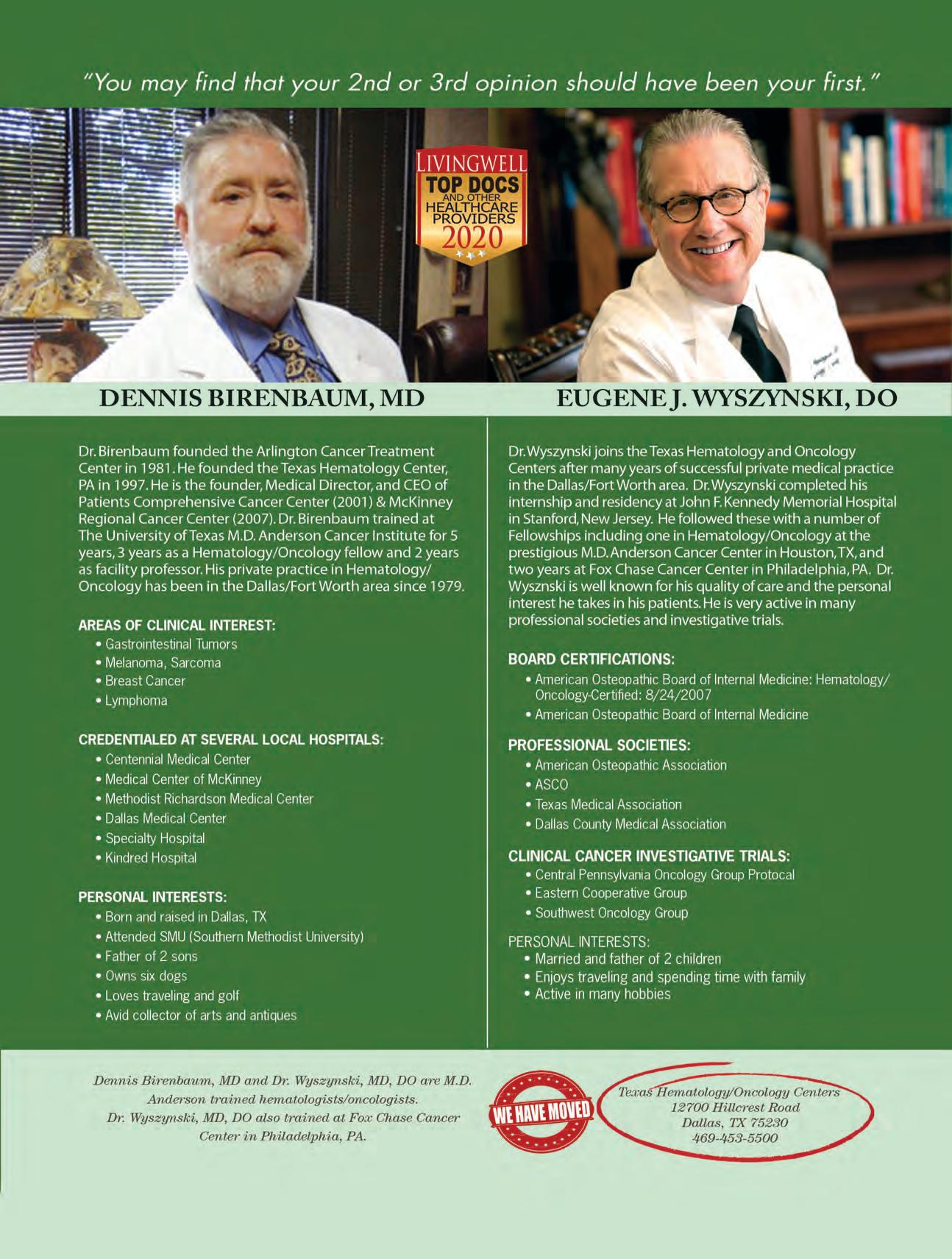

When you need top quality parts and service, look to Plano Power Equipment. To keep your equipment in top shape, you can count on Plano Power Equipment’s retail parts sales and ser vicing of Toro-brand equipment using genuine Toro® parts.

AGILITY!
21” Personal Pace® Honda Engine Super Recycler® Mower (20382)
• Personal Pace® self-propel automatically adjusts to your walk speed.
• Powered with a Honda® GCV 160cc OHC engine
• Covered by a 5-Year Guarantee-to-Start engine warranty plus a 5-Year Full Coverage Warranty.
30” Personal Pace® TimeMaster® Mower (21199)
• Time Saver – Finish jobs faster with the 30” deck.
• No Restarts! Leave the mower without restarts with Spin-Stop™ Blade Stop Pick Your Pace–You control the mowing speed with Personal Pace®.
• Quick Stow Storage Handle allows you to store your mower in tight spaces. GET THE JOB DONE FASTER AND START YOUR WEEKEND!
• Big Power – You’ll enjoy great power and performance from 10 00 ft.-lb. Gross Torque Briggs & Stratton® 223cc OHV engine.
MOW LIKE THE PROS!
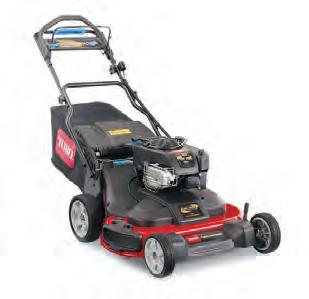
EXPERIENCE THE RESIDENTIAL ZERO-TURN RIDING MOWER WITH COMMERCIAL MOWER FEATURES.
50” TimeCutter® MX5000 (74773)
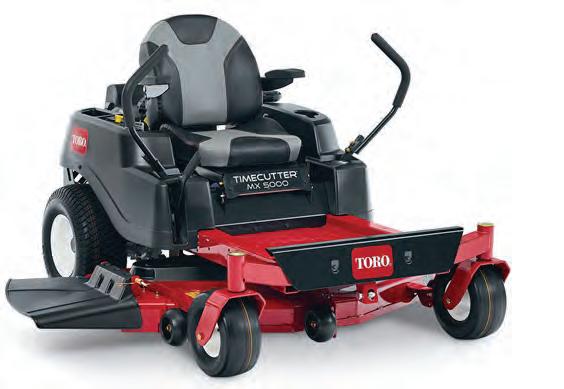
• Mow around obstacles easily with zero-turn radius steering and dependable dual hydrostatus transmissions.
• Enjoy a smoother ride with Toro’s long-lasting durable, heavy-duty 10-guage steel frame, commercial style front axle and heavy-duty front caster forks with wide front tires.
• Pro Performance 24 HP Kohler V-Twin 725cc engine with Pro-Series air cleaner.
• 50” heavy-duty fabricated deck featuring Toro’s tough IronForged™ cutting system that dominates challenging cutting conditions – 3-bladed mowing system and durable 6” commercial inspired spindles, driven by belts made of Kevlar®, the same material found in bullet proof vests.
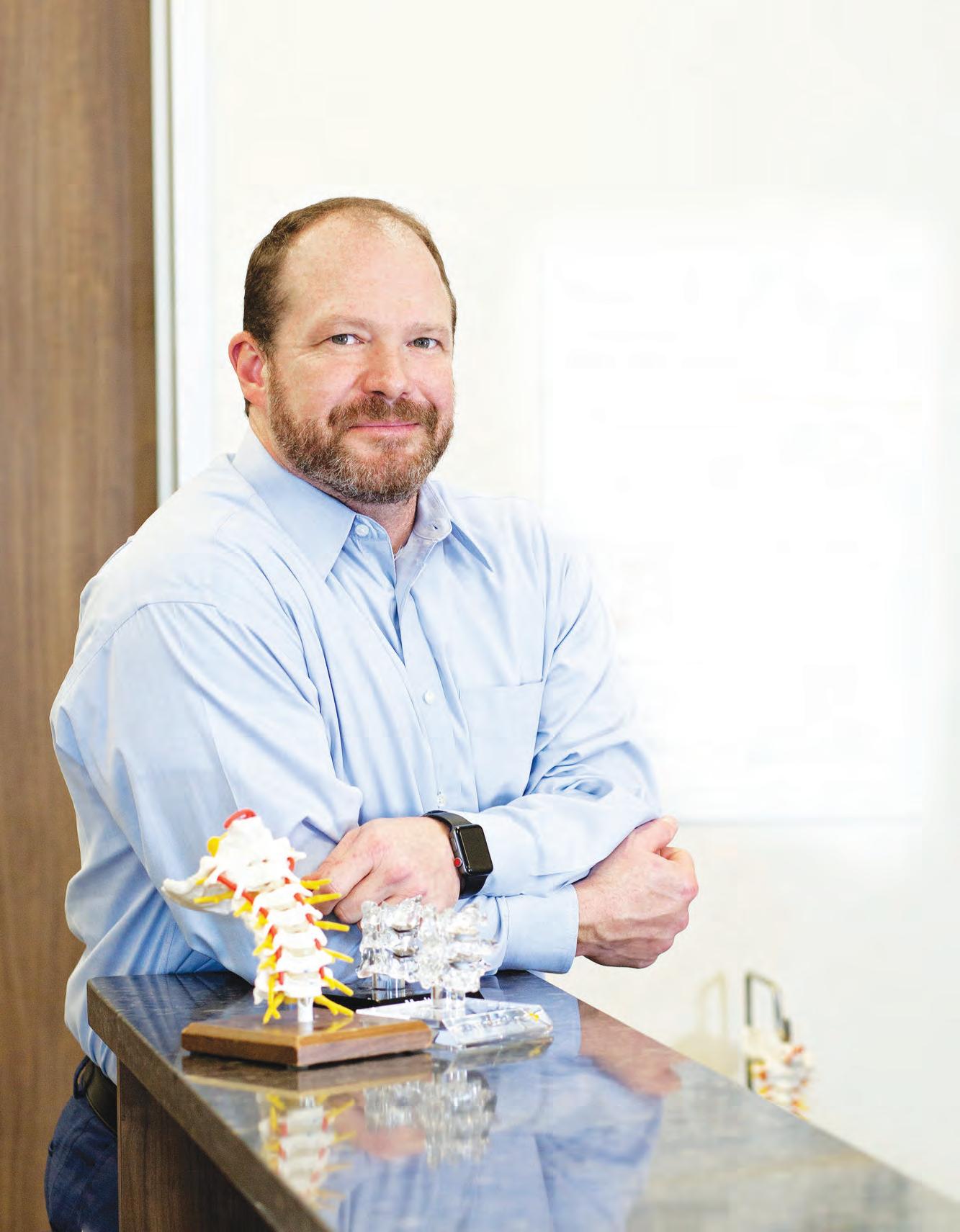
Dr. Jason Tinley, MD is a minimally invasive, board certified, orthopedic spine surgeon. He specializes in spine surgery, including spinal stenosis, cervical radiculopathy and myelopathy, minimally invasive cervical and lumbar spine surgery, cervical artificial disc replacement, and microdiscectomy.
Dr. Jason C. Tinley is committed to excellence by pledging to provide the highest quality spine care possible. Along with the treatment of immediate or chronic problems, he strives to integrate the doctrine of prevention in all treatment plans with the goal of alleviating possible future difficulties.
Dr. Tinley has become a leader in instruction and research in disc replacement and has a passion for optimizing spine surgery outcomes through development and utilization of new techniques, research and materials.
“Dr Tinley is a leader in the field of spinal surgery. His technique is excellent, but he does not rush to pursue surgery. Very good at explaining your condition and allowing you to decide a course of treatment.”
—RANDALL W.“My experience with DFW Center for Spinal Disorders was excellent. Dr. Tinley and his staff are attentive and compassionate. My surgery went better than I could have ever expected, and I am now pain free!”
—BARBARA K.Dear Olivia,
My husband and I have received both of our vaccines. When is it safe to visit our grandkids and get back to “normal”?
-I’m vaccinated, now what?
Dear I’m vaccinated, now what, First, thank you for choosing to be vaccinated. This is such an important step in getting our world and community back to some type of normal. The CDC has issued the following recommendations for a non-healthcare setting:
Fully vaccinated people can:
• Visit with other fully vaccinated people indoors without wearing masks or physical distancing
• Visit with unvaccinated people from a single household who are at low risk for severe COVID-19 disease indoors without wearing masks or physical distancing
• Refrain from quarantine and testing following a known exposure if asymptomatic

Olivia is a leading voice in health care and senior services and the Chief Nursing Officer of VNA Texas.
For now, fully vaccinated people should continue to:
• Take precautions in public like wearing a wellfitted mask and physical distancing
• Wear masks, practice physical distancing, and adhere to other prevention measures when visiting with unvaccinated people who are at increased risk for severe COVID-19 disease
• Wear masks, maintain physical distance, and practice other prevention measures when visiting with unvaccinated people from multiple households
• Avoid medium- and large-sized in-person gatherings
• Get tested if experiencing COVID-19 symptoms
• Follow guidance issued by individual employers
• Follow CDC and health department travel requirements and recommendations
Also, now that you have had the shot, you can encourage your friends and family to do so and share your experience. Wishing you health and joy as you visit your friends and family again.
~Olivia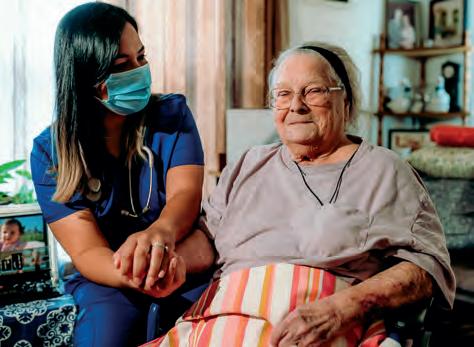
VNA Hospice Care focuses on living life to its fullest and treating you with the dignity and respect you deserve. As a nonprofit, our bottom line is patient support and care provided by our highly qualified staff.
Following the diagnosis of a life-limiting illness, patients and their loved ones have many questions about the best course of action. VNA Care Choices provides supportive care services in the home while continuing treatment with your current physician.


To schedule your free in-home informational visit please call (214) 535-2615 or email gethelp@vnatexas.org For volunteer opportunities please call (214) 689-2271 or email volunteer@vnatexas.org
 OGUNRO, DO Hand Surgeon
OGUNRO, DO Hand Surgeon
RAHUL BANERJEE, MD
Orthopaedic Surgeon Orthopaedic Surgeon & Sports Medicine Specialist
Orthopaedic Spine Surgeon
Orthopaedic Surgeon & Sports Medicine Specialist
Orthopaedic Spine Surgeon
At North Texas Orthopaedic & Spine (NTOS), patients of all ages are given the focused, individualized care they need in order to live fully and comfortably. The team at NTOS has a high level of expertise in the diagnosis and treatment of conditions involving the spine, joints, and bones.
Patients appreciate the practice’s ability to educate them thoroughly about their conditions and give them the tools that they need to take control of their well-being. Whether the patient is an athlete with an injury or someone who has a long-term condition that affects their daily life, the NTOS team works alongside them to get them back to a full, active life. NTOS offers treatment for shoulder pain, tennis elbow, torn ACLs, sciatica, carpal tunnel, herniated disc, scoliosis and more. These and other conditions can get in the way of your work, hobbies, and general enjoyment of life.
VUDHI SLABISAK, MD OLABISI BRUCE MARKMAN, MD



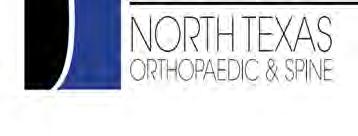
4090 Mapleshade Ln., Ste. 100 Plano, TX 75093 DALLAS
1130 Beachview St., Ste. 100 Dallas, TX 75218 DALLAS
3670 West Wheatland Rd. Dallas, TX 75237 FRISCO
7589 Preston Rd., Ste. 500 Frisco, TX 75034
4833 Medical Center Dr., 6E McKinney, TX 75069
KAUFMAN
874 West Hwy., 243, Suite 110 Kaufman, TX 75142 ODESSA
1030 North Grandview Ave. Odessa, TX 79761
3110 Parks Center Drive Tyler, TX 75701

If you think about it, anchoring an award-winning top morning talk show day in and day out for over 20 years must be exhausting. You have to look your best at all times, regardless of late nights and early mornings. Then there’s the constant small talk and off-the-cuff bon mots hosts need to strategically sprinkle throughout each telecast to keep the audience from changing the channel.
To keep up the endless a.m. shtick for two decades without it becoming staid is a skill, one that Kelly Ripa has mastered over the years. That Ripa’s on-air persona on the Live franchise is as fun and fresh as the first day she sidled up next to the show’s original patriarch, Regis Philbin, is a testament to Ripa’s natural comedic timing and self-depreciating humor.
Only 30 years old when she auditioned for the spot vacated in 2000 by Kathie Lee Gifford, Ripa impressed Philbin instantly. In his autobiography, How I Got This Way, Philbin wrote, “Hers was a natural, quick-witted, unaffected, confident, fun-loving kind of sparkle that both Gelman [Michael Gelman, the show’s executive producer] and I remembered very well.”
What had been Live with Regis & Kathie smoothly transitioned to Regis & Kelly. Ripa, best known for her All My Children role when she was hired as Gifford’s permanent replacement, not only held her own beside the industry stalwart, she invigorated the show. During the Regis years, Ripa and Philbin effortlessly bantered about the minutia of pregnancy, raising kids, and keeping it “hot” in the bedroom.
“

” I FEEL LIKE I HAVE A friendship WITH MY audience.
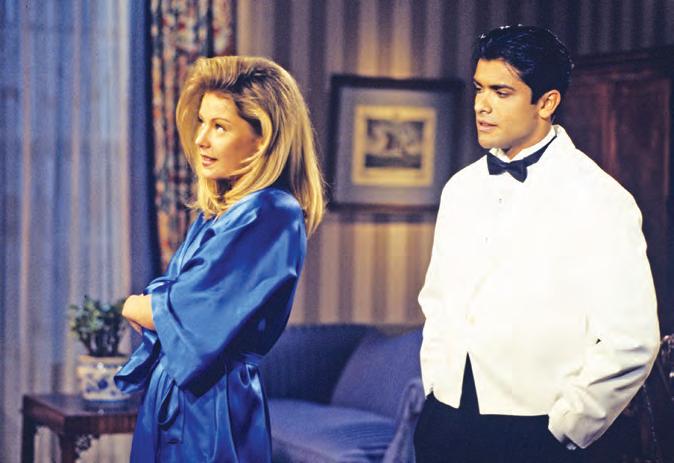


“I feel like I have a friendship with my audience,” Ripa told writer Irina Aleksander two years after Philbin retired at age 80. “Like we know each other, not on a level of talking head and viewers, but like, ‘My kid has the flu. So does yours? Oh my God, yours does too?’”
Ripa recently told Variety that her success connecting with viewers is due to “My overall willingness to let all my foibles unfold and put all of my imperfections out there.”
“A lot of people don’t listen to the people they’re talking to,” said CNN anchor Anderson Cooper. “But Kelly, she picks up on everything, and she makes fun of herself, which, in TV, not a lot of people can do in a genuine way.”
When Philbin stepped away in 2011, Ripa didn’t miss a beat and carried the show. Eventually Philbin was replaced by former football player Michael Strahan and the show was renamed to Live with Kelly & Michael. But, one thing was clear, Ripa was the main draw. This continued to be evident even when entertainment powerhouse Ryan Seacrest became Ripa’s permanent co-host after Strahan departed in 2016.
Live with Kelly & Ryan continues to showcase Ripa’s engaging on-screen presence and proved to be a bright light in people’s lives, even during a pandemic. “A lot of people watch our show when they’re in the middle of something,” Ripa told Woman’s Day writer Kelsey Hurwitz in 2020. “So I always approach my job like somebody right now is in an emergency room somewhere and they need something light, they need something happy, they need something joyful…if you can make that person happy or smile or even chuckle for a second, then you’ve done your job.”
ONCE IN A WHILE, I’D tilt the computer AND YOU’D SEE MARK [CONSUELOS, HER HUSBAND]
SLEEPING IN BED. IT WAS A VERY exciting way of doing business.
When Live! did at-home tapings during the height of the pandemic. “People really loved it because they felt it was intimate,” Ripa told Variety. “Once in a while, I’d tilt the computer and you’d see Mark [Consuelos, her husband] sleeping in bed. It was a very exciting way of doing business.”
As for Consuelos, Ripa’s husband, the pair met on the set of All My Children. A year after the two eloped in Las Vegas in 1996, they had a son, Michael. Daughter Lola Grace and son Joaquin Antonio followed.
“I thought she was the coolest, sexiest chick, Consuelos told Aleksander. “She smoked back then, and obviously I don’t think smoking is cool now, but when you’re 24…she was a really, really, sexy smoker.”
Never shy about her love for Consuelos, Ripa frequently takes to Instagram to share shirtless photos of her husband and she isn’t shy about talking about their sex life. When asked how often she and her husband get it on by pal Andy Cohen on his late-night show Watch What Happens Live, Ripa admitted they have “lots of sex.”
“I fundamentally believe that the more you do it, the more you do it, the less you do it, the less you do it,” she explained. “We just like each other a lot. I love my husband. I think he’s awesome. We’ve been together a really long time. We try to do spicy things together all the time.”
The 50-year-old Ripa has even gotten on the sexy selfie wagon, divulging an instance when she sent Consuelos a sexy photo. “I sent him a cute, adorable butt selfie in my underpants. It’s the only
time I’ve ever sent a semi-nude anything, ever!” Turns out, she accidentally sent it to her family members who responded to her via an email saying, “Dear Kelly, we are so proud of all your hard work. Your exercise classes are really paying off.”
There she goes, being relatable again and sharing personal anecdotes.
Of course, the topic of her preternaturally toned body and ageless visage is one she’s quick to point out is hard earned. Since 2015, Ripa has followed an alkaline diet that focuses on eating foods that are low in acid. “I believe inflammation is one of the great killers of people, in different ways. Whether it’s digestive problems, or heart health, or brain inflammation. Inflammation really affects your body in totality, so I try to maintain a really alkaline diet,” she told Women’s Health
In addition to daily workouts, SoulCycle classes, and sweat sessions with her personal trainer, Ripa also takes anti-inflammatory supplements, including omega-3 fish oil, black cumin seed oil, and turmeric. A CBD supplement for better sleep is also one of Ripa’s go-tos. “I’ve read about CBD, but I never really dialed into it, I thought it was nonsense, and it really does aide in helping you sleep,” she told People. I can attest, because sleep was so elusive for me for so many years, partly because I work out a lot, so I have a lot of energy, and partly because I’m a morning show host.”
If the past 20-plus years are any indication, Ripa will be a morning show host for the next two decades.

A visit to Allen Dental Center is like visiting with good friends.
We approach dentistry with a commitment to quality and a dedication to treating every patient as we want to be treated.
Call us today to learn more and schedule an appointment.
Brad Wyatt, DDS; Max Cook, DDS; Steve Williams, DDS; Josh Williams, DDS• Including cleanings, exams, routine x-rays at no additional
• Exclusive discounts off other procedures, like fillings.
• Benefits start immediately
• No deductibles, waiting periods, annual maximums, denials of claims, or pre-approvals.



We create a safe, enriching community where seniors can live well, know they’re safe, and maintain their dignity and sense of purpose. In today’s changed world, you can rest assured:
• Everyone entering our community wears a face mask and is screened according to CDC guidelines
• Staff are screened at the beginning, middle and end of their shifts
• Every assisted living resident is monitored for temperature, oxygen saturation level and condition changes
• We work with national-level laboratories for staff and resident testing
• We welcome PCPs (primary care physicians) and medical specialists, as residents require, and transport residents to medical appointments
Senior Lifestyle communities are designated as high-priority recipients of the COVID-19 vaccines. Our residents and staff are among the first to receive them, bringing us soon to the day when family and friends can freely visit again.
Diligence. We follow CDC guidelines for masks, handwashing and social distancing because we’re determined to keep you or your loved ones safe. Call 972-972-4517 to schedule a tour or to get a copy of A



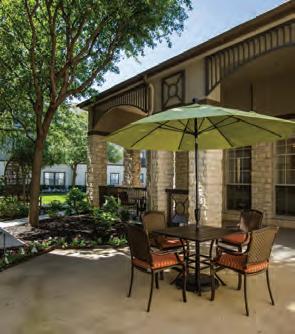

.

If you have been diagnosed with osteoporosis (low bone density) and have also tried treatments like rest and oral medication for more than a few days and still have sharp back pain, you may have a spinal fracture, also known as a vertebral compression fracture (VCF).
Balloon kyphoplasty (BKP) is a treatment for spinal fractures due to osteoporosis, non-cancerous tumors, and cancer. BKP has been shown in clinical studies to alleviate pain and reduce prescription opioids, compared to patients treated with non-surgical management, such as bracing and bed rest.1-3
While not all treatments have the same benefits for everyone, talk to your doctor about your options and whether BKP may be an option for you.
Although the complication rate for balloon kyphoplasty is low, as with most surgical procedures, serious adverse events, some of which can be fatal, can occur, including heart attack, cardiac arrest (heart stops beating), stroke, and embolism (blood, fat, or cement that migrates to the lungs or heart). Other risks include infection; leakage of bone cement into the muscle and tissue surrounding the spinal cord, and nerve injury that can, in rare instances, cause paralysis; leakage of bone cement into the blood vessels resulting in damage to the blood vessels, lungs, and/or heart.
1.
2.
3.
2011;26(7):1627-1637.
2009;373(9668):1016-1024.
. 2013;38(12):971–983.
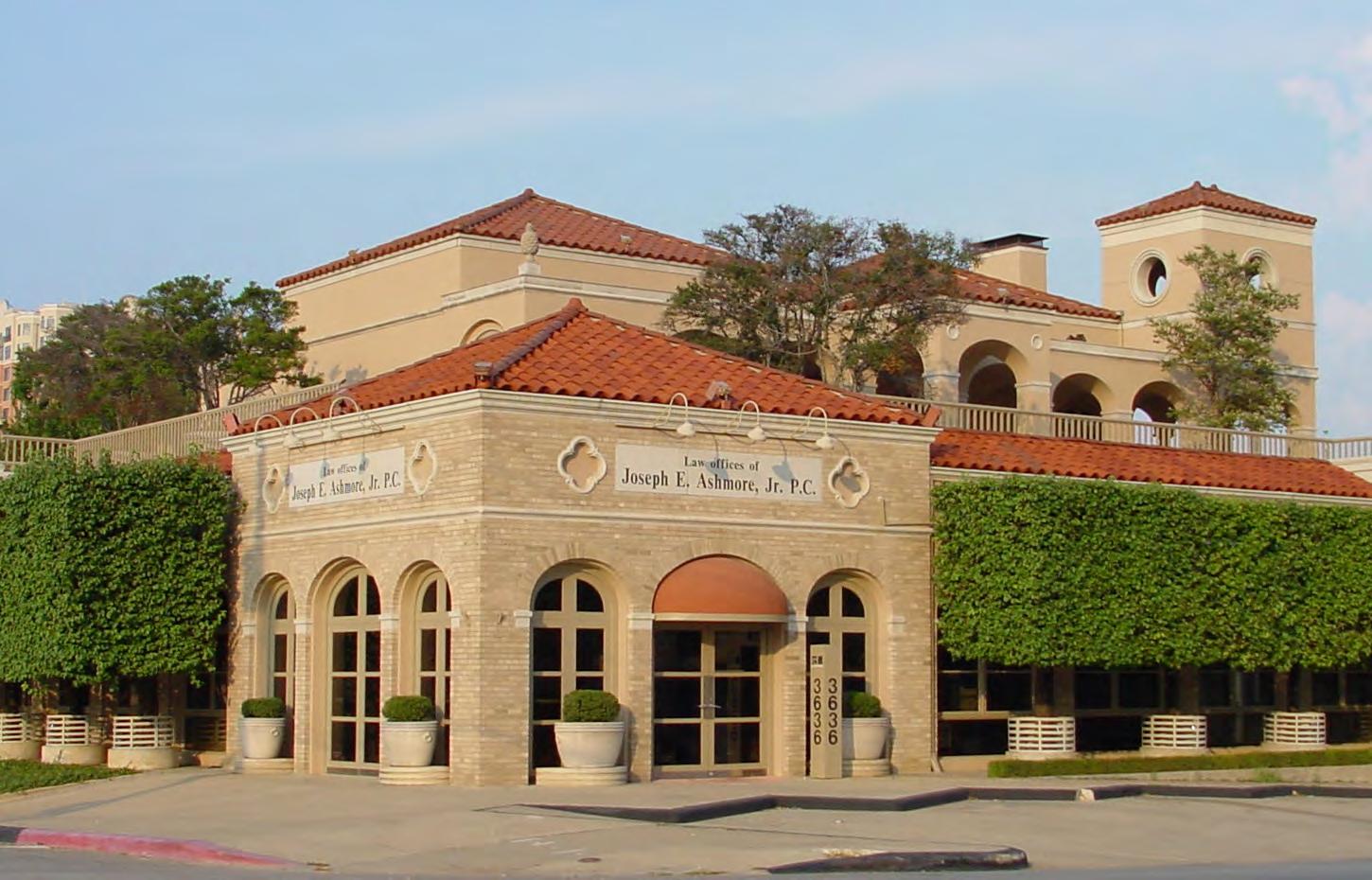


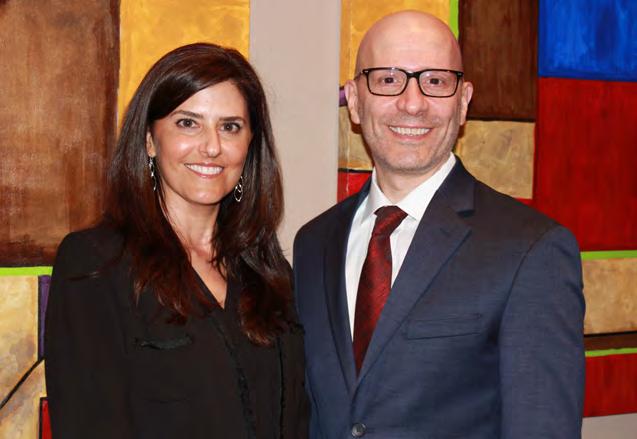
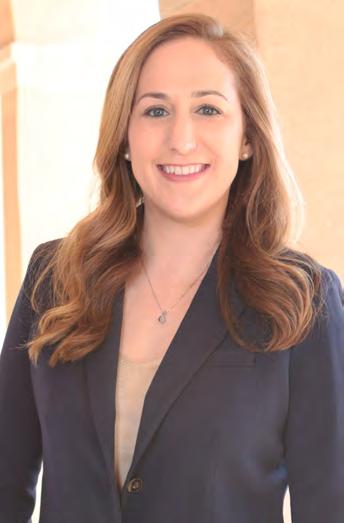
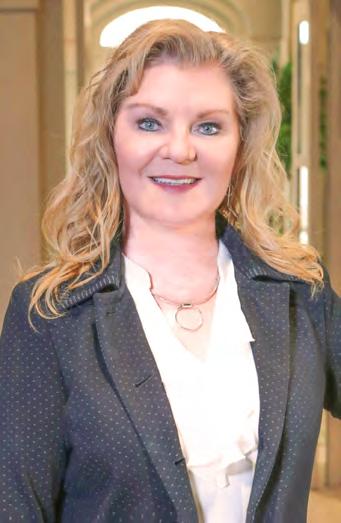
DFW Wound Care Center is a group of wound care specialists in all of the DFW area. They are fellow trained surgeons, and board certified in wound care and reconstructive surgery. All physicians have also completed an intense residency and fellowship in the area of limb salvage, and foot and ankle surgery. When it comes to wound care and limb salvage, DFW Wound Care Center has the knowledge and experience to successfully treat your condition. As a result, patients from all over the country seek to be treated by DFW Wound Care Center.

Whether caused by diabetes, infection or disease, any wound that will not heal can be very serious. If you are experiencing a wound or ulcer that will not properly heal, our wound care center can provide a range of expert treatment options best in each case. We offer non-surgical and surgical treatments for:
Diabetic Wounds & Ulcers
Arterial Ulcers
Infected Wounds
Open Wounds
Pressure Ulcers
Vascular Wounds
Acute Wounds
Non-Healing Wounds
Chronic Wounds
Surgical Wounds
Traumatic Wounds
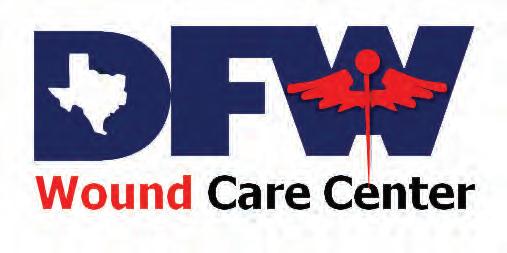
PLANO CLINIC 5804 Coit Road, Ste. 100 Plano, TX 75023
LEWISVILLE CLINIC 502 N. Valley Pkwy., #2 Lewisville, TX 75067
IRVING CLINIC
6161 N. State Hwy. 161, Ste. 320 Irving, TX 75038
DESOTO CLINIC 714 N. Hampton Rd. De Soto, TX 75115


What better way to spend quality time with your kids or grandkids and get in touch with nature than a fresh, invigorating walk in the woods, along a river, or the beach? What’s more, family hikes make for fun learning opportunities for the kids and adults alike.
Go on an excursion to learn about rocks and minerals. Before you go, learn which rocks and minerals are abundant in the area, and have everyone choose several to scout for. Take along a small plastic container with dividers, a descriptive rock and mineral guide, and a magnifying glass for viewing the colors, layers, and details. As you identify stones and minerals, discuss their uses and other neat facts.
Wander through the trees and listen carefully for a variety of bird and animal sounds. Before you go, visit your library for a DVD or audio CD of birds and wild animal calls. Then download an audio recorder on your phone and carry it on your hike to record some of the sounds you hear. Listen to the recording again at home and play a game of detective to determine the source of the sounds you can’t make out. Search the Internet and books to discover the makers of the mystery calls.
Capture nature’s splendor. Hiking trails provide plenty of photo opportunities, and kids will love snapping the shots. Discuss in advance what each person wants to photograph, such as a huge oak tree, a monarch butterfly, deer tracks, or a close-up of a nibbling squirrel. When you get home, print out the best photos, and create a nature scrapbook with them.
These giants of nature are not only intriguing because of their size but also because of their many variations. Borrow some books on trees from your library that describe the unique features of trees and their history. Use clues such as the shape of the leaves, texture of bark, and size of the trunk to identify the kind of tree.
Roam the countryside and teach the kids directional skills such as how to read a map and use a compass or the sun to determine direction. Before setting out, choose a trail system that provides maps, or make up your own. Take a trail that branches off several times, allowing for plenty of skill-building opportunities. For even more fun, turn the excursion into a treasure hunt. Hide a small prize just off the trail under a bush or pile of leaves, mark the location on your map, and let the journey begin.
Take a quiet hike in a wooded area with grassy clearings and see how many animals you meet. Watch for snakes, turtles, and geese if there’s a nearby lake or stream. Also, look for squirrels playing chase or gathering food; birds of prey circling overhead; or grazing rabbits and deer. Discuss the animal’s unique characteristics and how those qualities help or hinder the animal. Talk about what the animals eat, their shelters, and species they are related to. Also, keep eyes peeled for animal tracks to identify and determine how recently they were made.
Scouting for insects is an all-time favorite among kids, and the variety of creepy-crawly creatures in the woods is remarkable. Carry an insect book, clear container, tweezers, and a magnifying glass for close examination of insects’ fascinating features. Bring a journal and track the types of insects you find. Read about insects’ defense behaviors and characteristics such as colors that indicate danger to predators.
Discover with the children the fantastic diversity of plant life. Before you head out, review some books on plants to spark your interest. On each hiking trip, choose a different trail or area and see what plants grow in certain types of soil, climates, and in each season. As you inspect plants, look for their seeds, and notice the variations. Talk about how seeds travel by blowing in the wind or catching on the fur of animals. Carefully brush away the ground cover and look for seeds that have sprouted their roots that will soon develop into a new plant or tree. Learn how individual plants have evolved to have natural defenses to protect against creatures that would otherwise devour them.
Cedar Ridge Nature Preserve
Texas Buckeye Trail
Trinity Forest Trail
White Rock Lake Park Loop Trail
Eisenhower State Park
Northshore and Knob Hill Trails
Eagle Mountain Park
Lewisville Lake Environmental Learning Area (LLELA)
Erwin Park Trail
Ray Roberts Lake State Park
Arbor Hills Nature Preserve
Chisholm Trail
Heard Natural Science Museum and Wildlife Sanctuary
Oak Point Park and Nature Preserve
Binkley Park and Herman Baker Park Loop
Prairie Loop
Raasch Trail
Shoreline Trail

Plan your activities before you leave so you’ll arrive prepared. For your comfort and convenience, carry a small daypack, extra clothing for cold air along trails, and don’t forget hiking boots. For your protection, bring along hats, sunglasses, sunblock, and insect repellant. Be prepared for emergencies by carrying a small flashlight and batteries, watch, map, bandages, and don’t forget plenty of water and snacks. Finally, make the most of your nature quest by carrying binoculars, a magnifying glass, and a small camera.
When hiking with children, keep these suggestions in mind.
• Allow small legs plenty of time for breaks and making the journey and know your kids’ limitations.
• Be familiar with potential dangers in the area in which you’ll explore and teach your kids trail and animal safety.
• Before you set out, prepare your kids by informing them that there may be rules against taking their nature finds home.
You might be surprised to discover nearby trails that you never knew existed. Check with city, county, and state parks and for trails along rivers or near lakeshores. There are also national forests and parks throughout the United States with extensive trail systems. If you have access to a wooded area near you that isn’t too dense, a trail may not be necessary. When hiking off trails, use safety precautions to protect against tripping, poison ivy, getting lost, or other hazards. 3 3 3

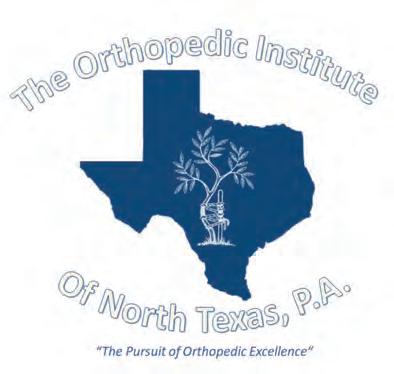

Dr. Florian Dibra performs a full scope of orthopaedic surgeries. He also specializes in managing hip and knee arthritis. This includes non-operative treatment as well as surgical options including partial joint replacement, anterior hip replacement, total joint replacement, minimally invasive surgery as well as revision joint replacement.
Before joining The Orthopaedic Institute of North Texas (OINT), Dr Dibra trained at the University of Florida obtaining his fellowship in Hip and Knee Replacement Surgery. Dr Dibra has an extensive research background and has authored numerous articles, book chapters and other publications. He has lectured nationally and continues to be an active contributor to advancing hip and knee replacement literature.



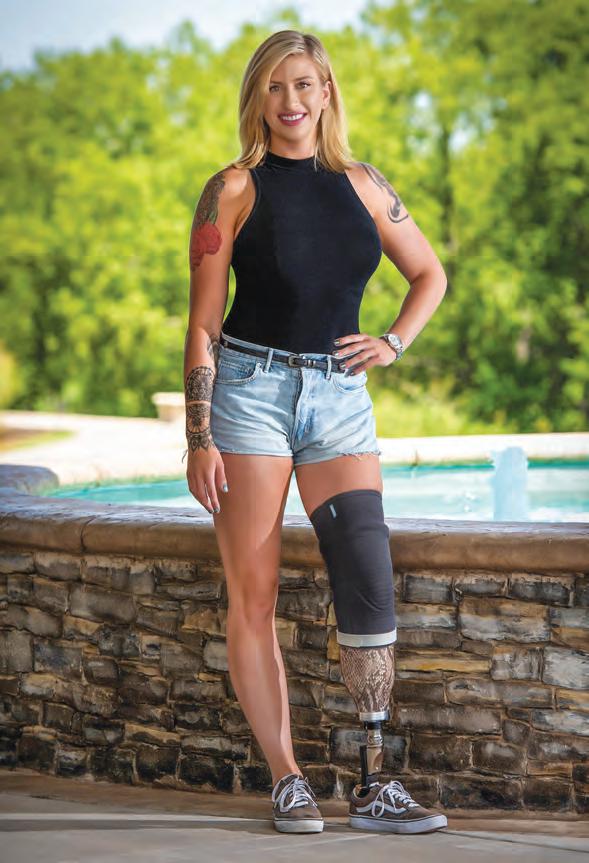
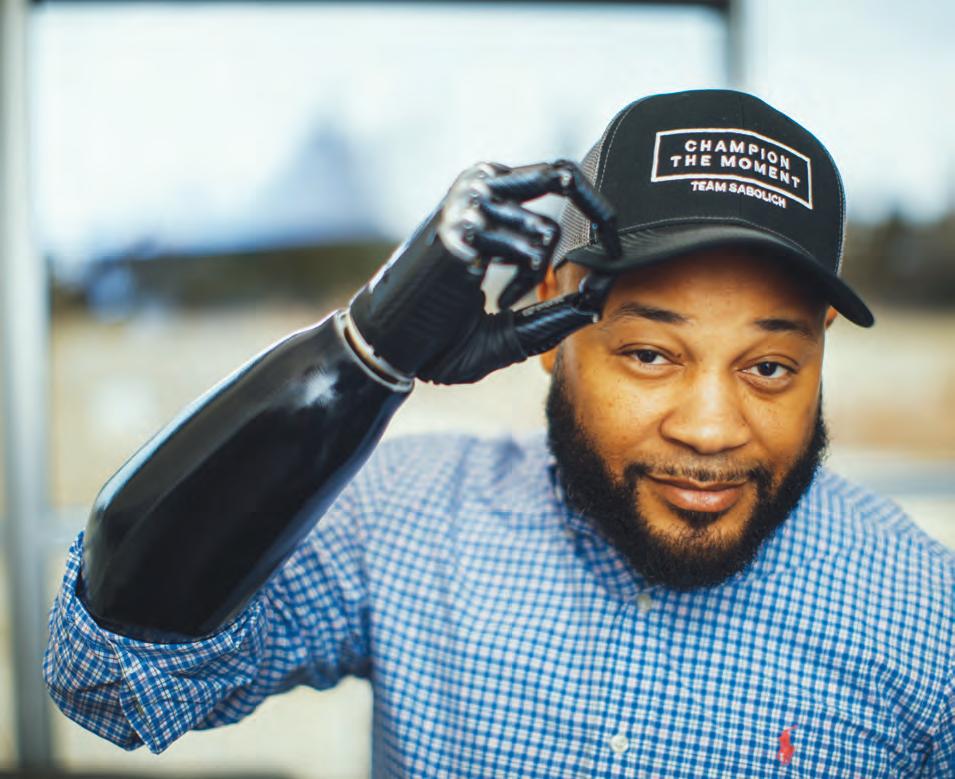


It’s estimated that 5 million Americans have Congestive Heart Failure (CHF), a chronic and often undiagnosed medical condition in which the heart becomes weak and unable to pump blood effectively throughout the body. Although the words “heart failure” sounds alarming, it does not mean your heart has stopped beating or is about to. It means your heart is unable to pump blood the way it should, to deliver oxygen-rich blood to your body or remove waste from it. By not being able to effectively remove waste from the body, fluids build up in the lungs and other body tissues (including the abdomen, feet, ankles and legs). CHF is often chronic, which means it can be managed and treated, but not cured. Day-to-day activities such as walking, climbing a flight of stairs or grocery shopping can be difficult because you can, among other things, get short of breath and feel tired.
There are several different causes of CHF. Some risk factors are high blood pressure, coronary artery disease, irregular heartbeat, heart valve disease, congenital heart defects (defects you are born with), heart muscle disorder, previous heart attack(s), diabetes, alcohol and drug abuse.
A patient may go years without visible symptoms of CHF, and the symptoms typically worsen as you age. As the heart weakens, it pumps less blood. CHF develops slowly as you age because the heart itself tries to counteract its weakness by enlarging itself and pumping faster, attempting to keep the same amount of blood moving through the heart. However, this is only temporary. The heart eventually tires and cannot pump enough blood to meet the body’s requirement. Some symptoms of CHF include shortness of breath, feeling weak and/or tired, fatigue, swelling of the ankles, feet or legs, dizzy spells that can lead to decreased attention span and memory loss, frequent urination at night, an irregular or fast pulse, and weight gain from excessive fluid.
To see why your heart has weakened, a physician will perform an examination, ask questions and possibly do some tests. The physician is looking for signs and symptoms of CHF as well as any underlying condition that may have caused your heart to weaken. The physician
will use a stethoscope to listen for an irregular or quick heartbeat, and will listen to your chest for sounds of fluid around your lungs or the distinct sounds of a faulty heart valve. Your physician may order a chest x-ray to see if your heart is enlarged and detect any fluid around the lungs. An EKG (electrocardiogram) can be used to check for irregular heartbeats or prior heart attack. Echocardiography (sonography of the heart) can see the structure and movement of your heart. Other tests such as stress tests, holter monitor, nuclear scans and cardiac cath can be used as well.
Your physician uses the information learned to develop a treatment plan. The treatment for CHF depends on the cause and severity of your condition. It’s best treated when the cause of your CHF is identified. The treatment plan is designed to relieve some of your symptoms and may include medications to help your heart work better, rest periods during the day, dietary changes to reduce the amount of sodium you ingest, physical activity as prescribed by your doctor, lifestyle changes such as limiting how much alcohol you drink, quitting smoking, controlling your high blood pressure, diabetes and cholesterol levels, and weighing yourself daily to watch for fluid buildup.
According to Centers for Disease Control and Prevention, one person dies every 36 seconds in the U.S. from cardiovascular disease. About 655,000 Americans die from heart disease each year—that’s 1 in every 4 deaths. This is because people are living longer. As baby boomers age, CHF rates will increase. CHF is the number one cause for hospital admission in the United States for people age 65 and older. The best treatment for CHF is prevention but it’s equally important for those who suffer from CHF to know they have options. People with CHF can lead happy, productive lives. It’s important for those suffering with CHF to include their families and friends, build a support network, make the lifestyle and dietary changes they need to, and frankly become active participants with their physicians in the management of their health. If you’re suffering from some of the signs and symptoms of CHF and have not been to a doctor recently, please call your primary care physician and set up an appointment.
According to Centers for Disease Control and Prevention, one person dies every 36 seconds in the U.S. from cardiovascular disease. About 655,000 Americans die from heart disease each year—that’s 1 in every 4 deaths.
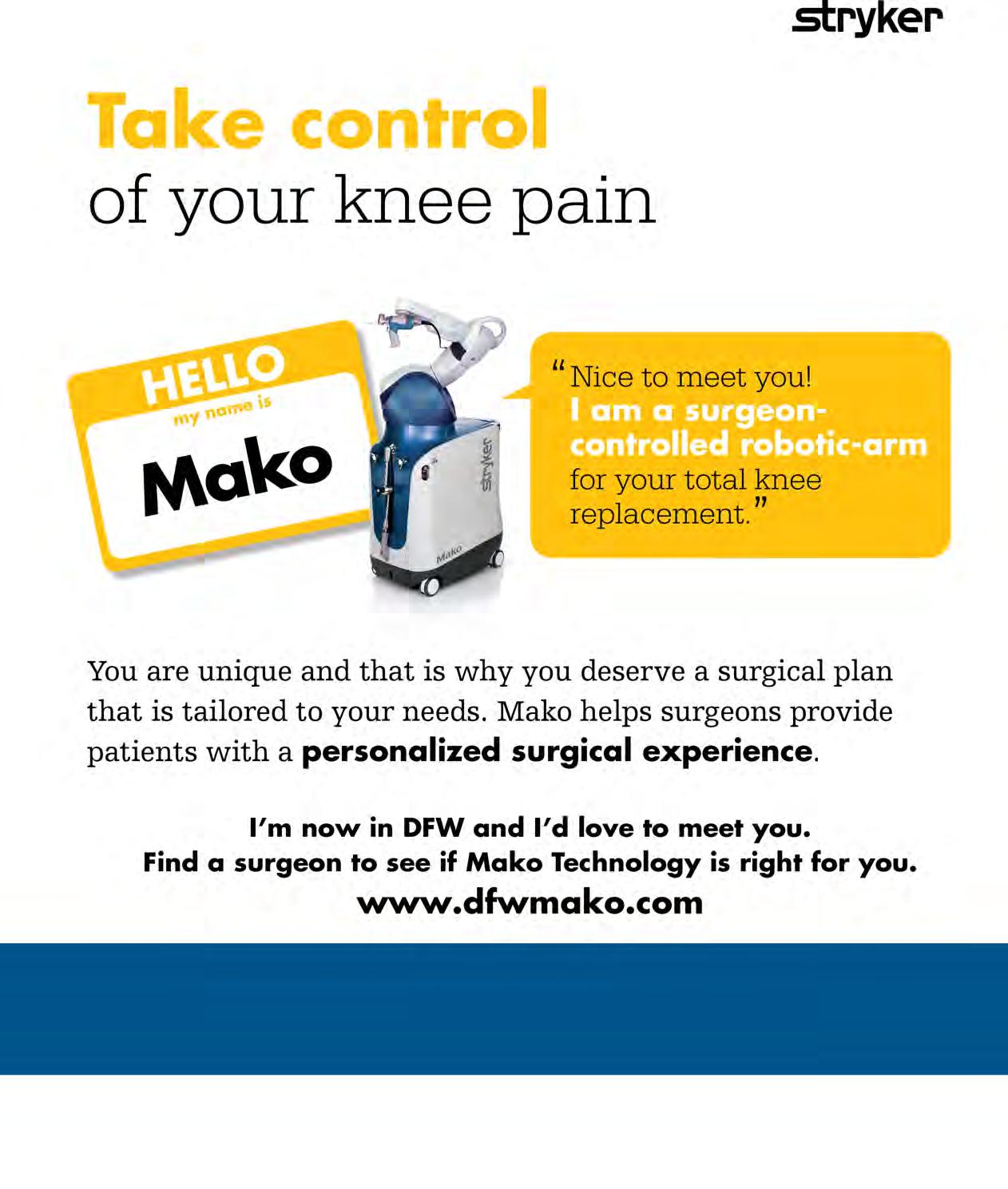

Dr. Chambers is an orthopaedic surgeon at Dallas Orthopaedic Joint Institute who specializes in joint replacement surgery. He received extensive training in joint replacement surgery during his fellowship at Harvard Medical School / Massachusetts General Hospital, which was voted as the top hospital in the United States. Dr. Chambers has implemented the techniques learned at Harvard Medical School into his own practice and offers minimally invasive total hip / knee replacement, partial knee replacement, revision surgery for malfunctioning, loose, and infected joint replacements, arthroscopic surgery of the hip and knee, and revision of failed and recalled metal-on-metal total hip replacement implants. Dr. Chambers focuses special attention on surgical techniques for rapid recovery after total joint replacement which allow his patients a more predictable and earlier return to home and an active lifestyle.
Dr. Chambers is pleased to offer the MAKOplasty Robotic-Arm Assisted partial/total knee and hip replacement. The MAKOplasty procedure is changing the way joint replacement surgeries are performed by providing each patient with a personalized surgical experience based on their specific diagnosis and unique anatomy using a CT-based 3D modeling. The robotic arm technology allows for extremely precise placement of hip/knee components with potentially less soft tissue injury than traditional joint replacement.
Dr. Chambers is a Texas native and grew up in Houston, Texas. He attended medical school at The University of Texas Medical Branch in Galveston, and completed residency at John Peter Smith Hospital in Fort Worth, Texas. He then completed a fellowship in joint replacement surgery at Harvard Medical School. In his free time, Dr. Chambers enjoys traveling with his wife, Christine, and spending time with friends and family. He is an avid sailor and enjoys participating in sailing races on the local lakes in the Dallas/Fort Worth area.
Dr. Chambers practices at Methodist Dallas, Charlton, and Richardson Hospitals. To schedule an appointment please call or text 469-747-0382.
METHODIST DALLAS MEDICAL CENTER
221 W. Colorado Blvd., Pav II, Suite 431 Dallas, Texas 75208
METHODIST CHARLTON MEDICAL CENTER
3430 W. Wheatland Rd., POB 1, Suite 216

Dallas, Texas 75237
469-747-0382
469-405-0135 FAX
dallasorthojoint.com











